Electromagnetics Homework: Asymptotic Evaluation of Integrals Solution
VerifiedAdded on 2023/06/12
|8
|1500
|205
Homework Assignment
AI Summary
This document provides detailed solutions to an electromagnetics homework assignment involving the asymptotic evaluation of integrals. The first question utilizes integration by parts to evaluate an integral. The second question employs the stationary-phase method to approximate the Bessel function Jn(x) for large x. The third question applies Laplace's method to asymptotically evaluate the modified Bessel function of the first kind, I0(Ω), for large Ω. Finally, the fourth question uses Watson's Lemma to determine the first two leading terms of the asymptotic approximation to a given integral as Ω becomes large. Each solution includes detailed steps and justifications for the methods used.
1 out of 8

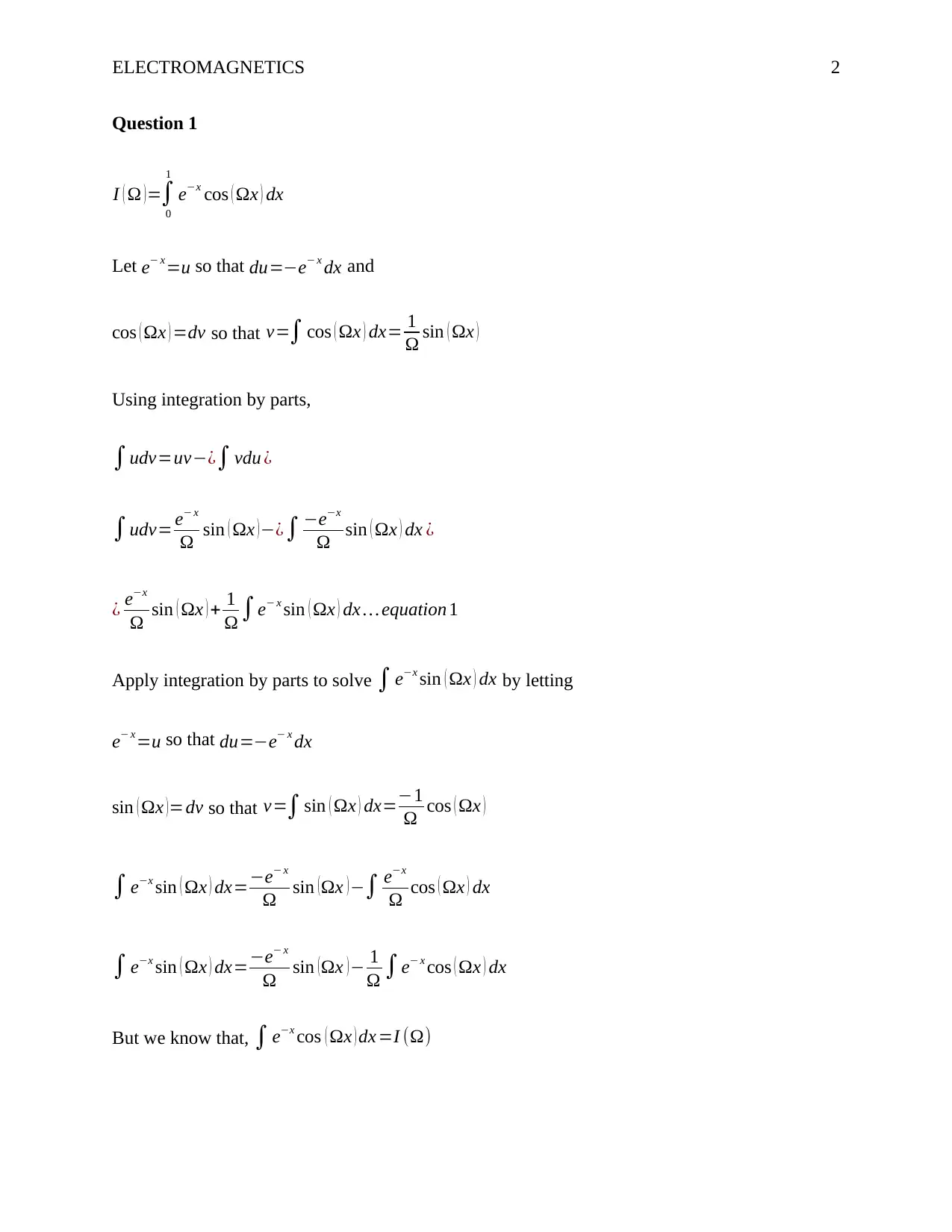
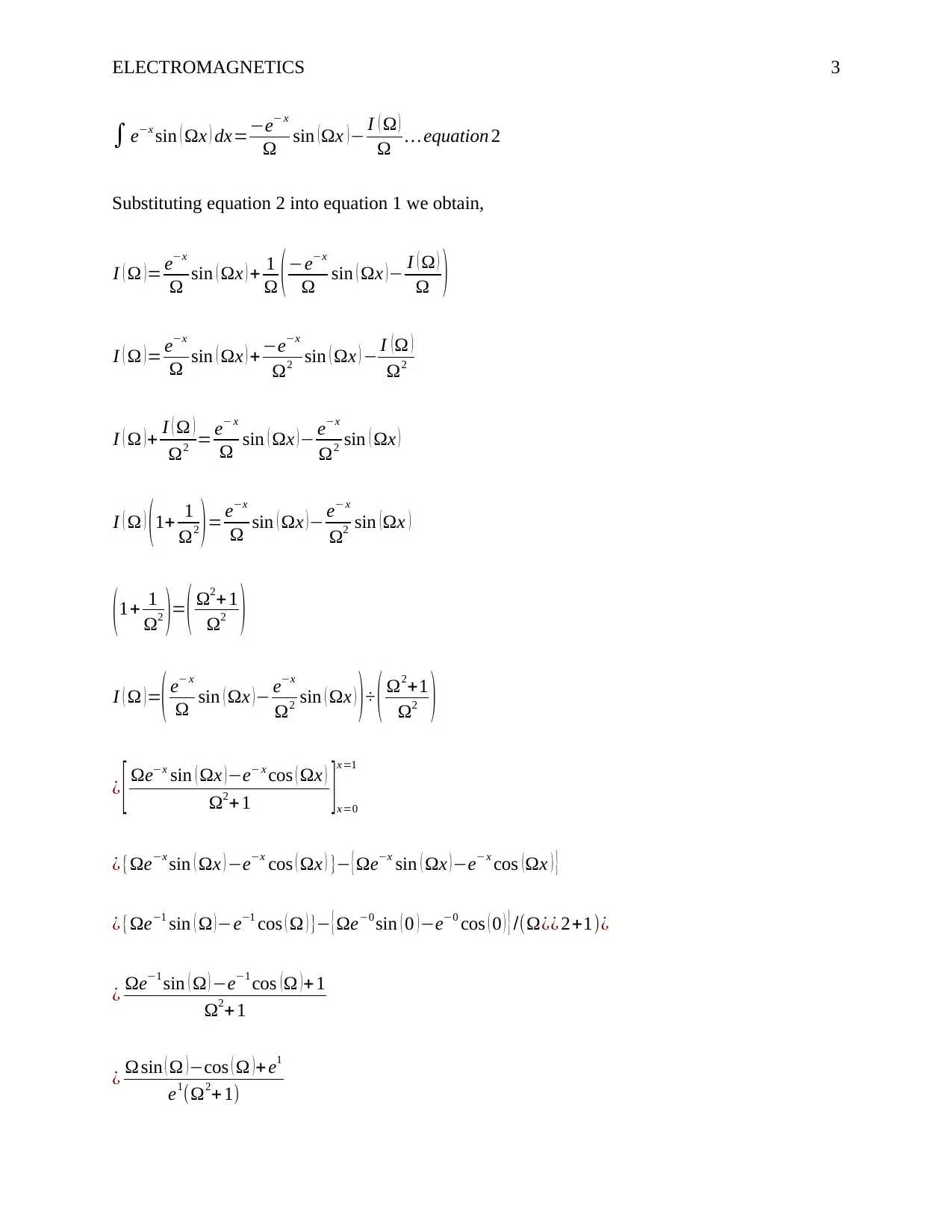

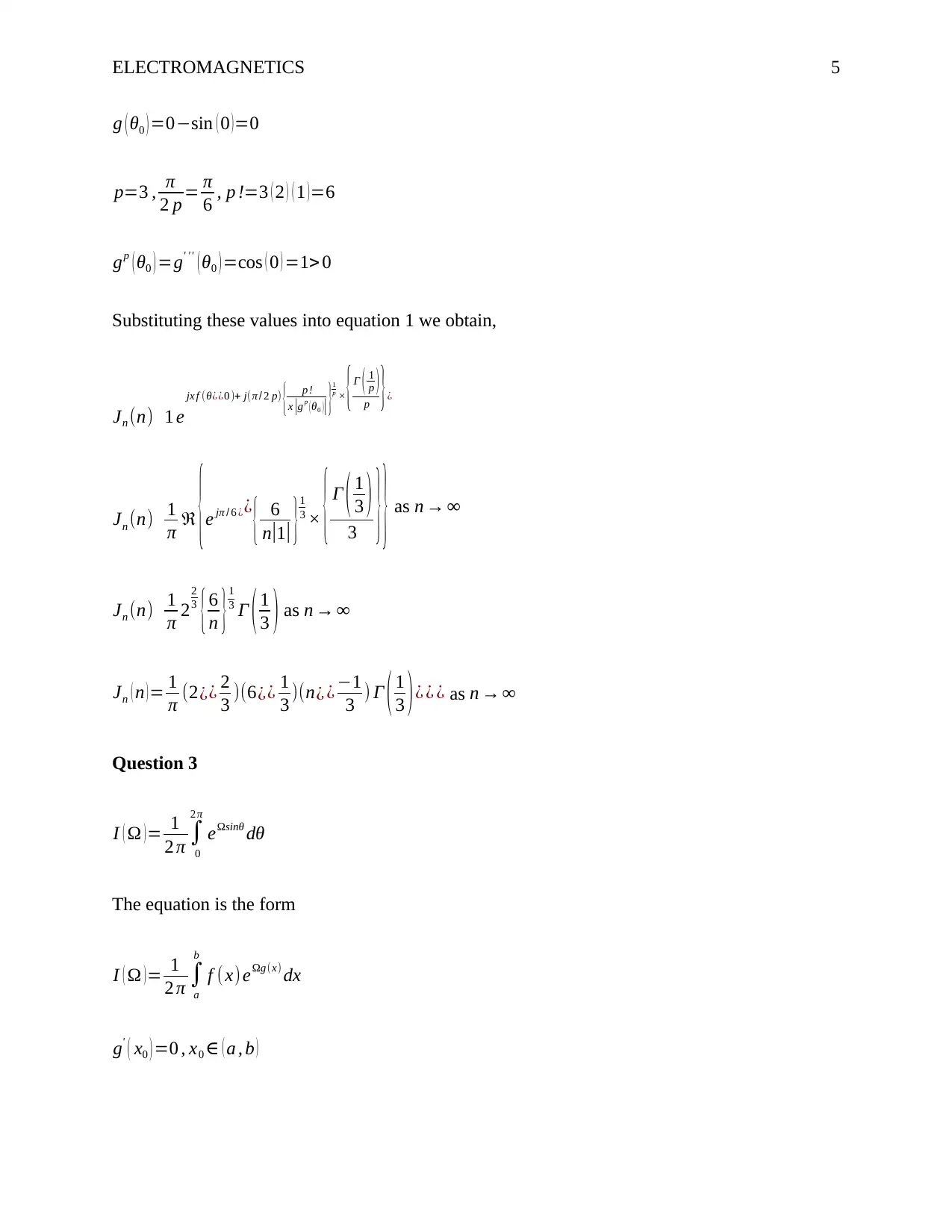

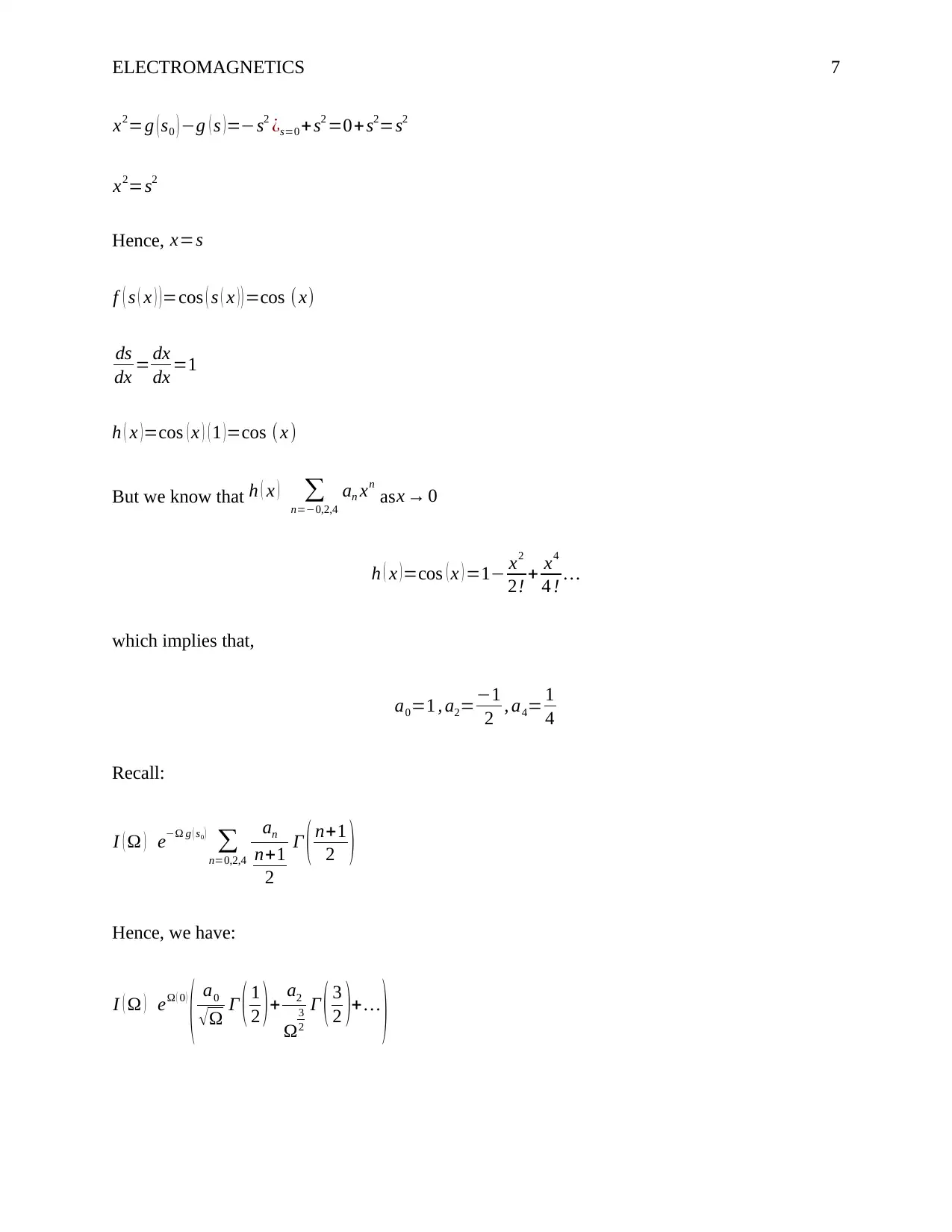
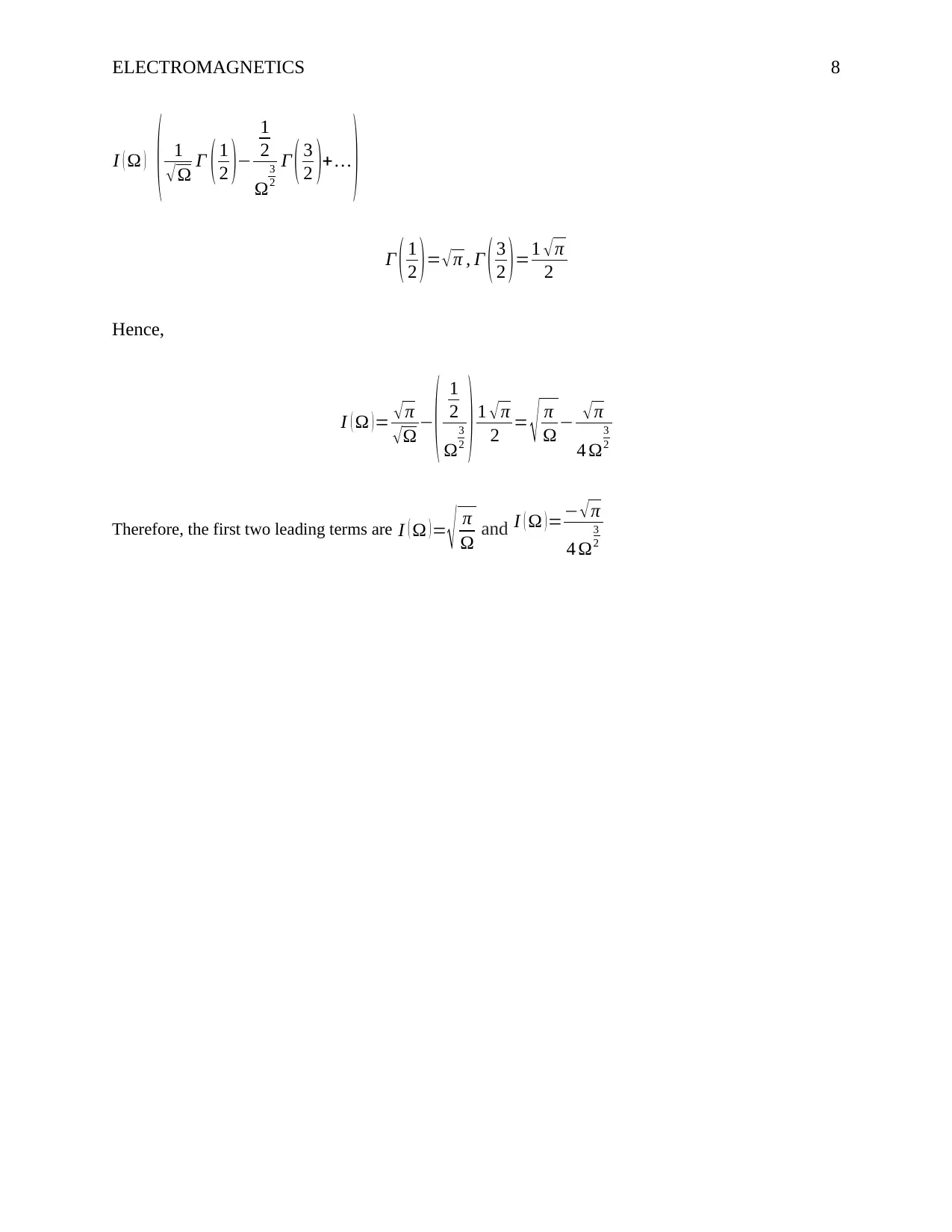






![[object Object]](/_next/static/media/star-bottom.7253800d.svg)